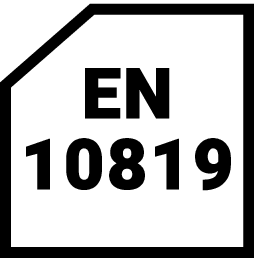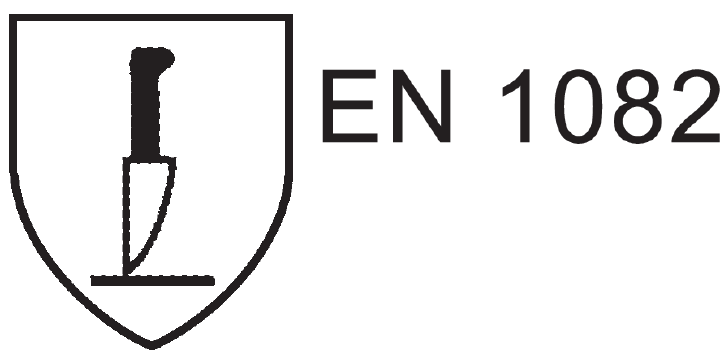-
-
-
-
-
-
-
- Jackets and Vests
- Sweaters
- Shirts
- T-shirt and Pique shirts
- Work trousers
- Shorts and pirate pants
- Hi-Vis Clothing
- Hi-vis rainwear
- Rainwear
- Undergarments
- Underwear and socks
- Skirts and Kilts
- Overalls
- Hats and Caps
- Aprons
- Belts and Braces
- Knee pads and support protection
- Tool Belts and Material Pouches
- Disposable and Chemical Protection
- Protective Clothing, aluminised
- Miscellaneous
- Show fewer
- Show more
-
-
-
-
-
-
Standards for gloves
Categories
Protective gloves are divided into 3 categories depending on the type and the risk or hazard that the gloves are intended to protect against:
Category 1 - gloves that can be used in low-risk situations
Examples of gloves in this category are household gloves for protection against washing, dishwashing, cleaning agents, and gloves for protection against hot objects or temperatures that do not exceed +50° C. Other gloves in this category may be for lighter work such as gardening or tasks where the risk of serious injury is low.
Category 2 - all types of gloves that are not classified as category 1 or 3
Gloves used in this category where the risk is not classified as low or very high. It is also required that the gloves are tested by an accredited testing institute and approved by a notified body. These gloves must be marked with a pictogram showing the glove's protective function. This category often includes gloves that protect against mechanical risks according to EN 388.
Category 3 - gloves that are intended to be used in a hazardous environment where there is a high risk of serious injury occurring.
Gloves in this category are used when there is a risk of a serious or permanent injury occurring, such as handling aggressive chemicals. For these gloves to be CE marked, they must be tested by an accredited testing institute, approved by a notified body, and have manufacturing control of the product or production carried out.
|
|
EN 420This standard defines general requirements that apply to all protective gloves:
|
|
|
EN 388:2016Protective gloves against mechanical risks. According to this standard, properties such as abrasion resistance, cut resistance, tear resistance, puncture resistance, and impact protection are tested. In connection with the pictogram, four digits and alternatively two letters should be displayed. These characters indicate the glove's performance level.
The meaning of each digit and letter can be found in our performance level table. 1. Abrasion resistanceThe material is subjected to abrasion/grinding by sandpaper under a fixed pressure. The protective function is indicated on a scale from one to four depending on how many cycles are required before a hole is formed in the material. The higher the number, the better the abrasion resistance. 2. Cut resistance, coup testHere, the glove's cut protection level is tested. A knife is passed over the glove material until it cuts through. The protection level is indicated by a number from 1 to 5. If the material dulls the knife, the test should instead be performed according to ISO 13997, see point 5. 3. Tear resistanceThe force required to tear the glove material is measured. The protective function is indicated by a number from 1 to 4, with 4 indicating the strongest material. 4. Puncture resistanceThe force required to puncture the material with a point is measured. The protective function is indicated by a number from 1 to 4, with 4 indicating the strongest material. 5. Cut resistance, TDM test ISO 13997Here, the glove's cut protection level is tested if the material dulls the knife during the coup test. The result is reported here with a letter, A-F, with F indicating the highest protection level. When one of these letters is reported, it determines the glove's protection level instead of the number. 6. Impact protectionIf the glove has impact protection, this is indicated by a P as the sixth and final character. |
|
|
EN 388:2003Protective gloves against mechanical risks. According to this standard, four different properties are tested: abrasion resistance, cut resistance, tear resistance, and puncture resistance. In connection with the pictogram, four digits (or alternatively six characters) are displayed, indicating the performance level of the gloves.
The meaning of each digit can be found in our performance level table. 1. Abrasion resistanceThe material is subjected to abrasion by sandpaper under a fixed pressure. The protective function is given on a scale from 1 to 4 depending on the number of cycles required to create a hole in the material. The higher the number, the better the abrasion resistance. 2. Cut resistanceThe number of times a knife is passed over the material at a constant pressure until it cuts through is counted. The result is given on a scale of 1-5, with 5 being the highest level of protection. 3. Tear resistanceThe force required to tear the glove material apart is measured. The protective function is given on a scale of 1-4, with 4 indicating the strongest material. 4. Puncture resistanceThe force required to puncture the material with a point is measured. The protective function is given on a scale of 1-4, with 4 indicating the strongest material. |
|
|
EN 13997Determination of resistance to cutting with sharp objects.
|
|
|
EN 374Protective gloves against chemicals and microorganisms. This standard specifies the requirements for gloves to protect the user against chemicals and/or microorganisms.
This table provides a general overview of various glove materials that provide suitable protection against different types of chemicals.
|
|
|
EN 511Cold protection gloves. This standard measures how well the glove withstands both ambient cold and contact cold. In addition, water penetration is tested after 30 minutes.
|
|
|
EN 407Heat-resistant gloves. This standard specifies requirements and test methods for protective gloves intended to protect against thermal risks such as heat and/or fire. There are two pictograms with clear distinctions between when the glove protects against flames and when it does not. The numbers displayed beside or below the pictogram indicate the gloves' performance for each test in the standard. The higher the number, the better the performance level. An "X" indicates that the protection level has not been tested. 1. Material flameabilityThe duration of time the material glows or burns after being ignited by a gas flame is measured. If this test has been conducted on the glove, this pictogram is used:
If the fire properties of the material have not been tested, this pictogram is used:
2. Protection against contact heatThe glove is exposed to temperatures between +100°C to +500°C. Then the time it takes for the inside of the glove to become 10°C warmer than it was initially (around 25°C) is measured. The time must be at least 15 seconds for approval. 3. Protection against open flameThis measures the time it takes to increase the temperature inside the glove by 24°C using a gas flame (80kW/m2). 4. Protection against radiant heatThe average time for heat penetration of 2.5kW/m2 is measured. 5. Protection against drops of molten metalThe test is based on the number of drops of molten metal that generate a temperature increase between the material and the skin by 40°C. 6. Protection against molten metalA PVC film is attached to the back of the material to be tested. Then liquid iron is poured onto the material. The measurement is based on how many grams of molten iron are required to damage the PVC film.
|
||||||||||||||||||||||||||||||||||||||||||||||||||||||||||||||||||||||
|
|
EN 12477Protective gloves for welders. This standard describes how gloves should be designed to provide protection for the hand and wrist during welding and similar work.
|
|
|
ASTM F2878-10Resistant to penetration of hypodermic needle/cannula. This method is used to determine the force required for a hypodermic needle or cannula to penetrate the protective material. The needles can have thicknesses of 21, 25, or 28 gauge. The protective function is indicated in Newtons.. |
|
|
ESDProtection against electrostatic discharge - protection of electronics. Materials are tested for vertical resistance between the hand and electrode.
For adequate protection of electrical products, the ESD-labeled glove should be used together with other ESD equipment such as clothing, shoes, and wristbands, among others. |
|
|
FoodMaterials that comes into contact with food
|
|
|
EN 1082Gloves and arm protectors made of chainmail material that protect against cuts and stabs from handheld knives when cutting towards oneself, for example in the slaughterhouse industry. |

























